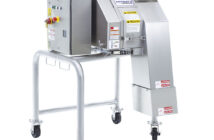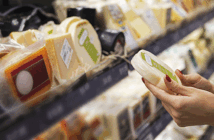New study provides inside view on the Asian wine markets.
For the newly released survey, ProWein in Düsseldorf Germany enlisted renowned British market research institute Wine Intelligence. The results are based on extensive qualitative and quantitative research with consumers, importers and distributors across Asia. The result – China will remain the most attractive Asian market for wine exporters in the next five years.
But the wine industry should also be ready to capitalise on opportunities in Japan, South Korea, Singapore and even Taiwan – the other key Asian countries studied in the report.
Although all five markets differ substantially, and it would be a mistake for the wine industry to think of Asia as a single cultural bloc, there are some trends and characteristics that can be observed across the continent. In the new ProWein study “Asia – Opportunities in China and beyond”, it’s acknowledged that the trend towards everyday, affordable imports is evident across Asia, as wine shakes off its image of being purely a luxury product, and becomes more attractive to younger consumers. They in particular are finding a place for wine as part of their lifestyles, and showing a real interest in understanding it better. The on-trade is often the best environment in which to target these consumers.
Further key finding of the survey: Incountry representation is key to success.
“The wine producers who will achieve the biggest success will be the ones who not only get to grips with these trends, but actually take the trouble to establish a physical presence in their target markets. It’s not possible to conquer China, Japan, South Korea, Singapore or Taiwan from an office outside those countries.” says Richard Halstead, chief operating officer at Wine Intelligence.
“This result from our ProWein survey confirms experience we have also had in other commercial sectors as a worldwide organiser of trade fairs. Which is why we are offering our customers from the wine sector an ideal platform to showcase themselves on the Chinese market from 13 to 15 November 2013 at ProWine China,” says Michael Degen, division director in charge of ProWein at Messe Düsseldorf.
China’s spectacular growth is likely to continue, with the help of improved ranges in supermarkets and more affordable pricing. Consumers are associating imported wine with sophistication and wellbeing and the number of imported wine drinkers is expected to surge well beyond the current 19 million.
In Japan, much of the market growth is being driven by the off-trade, as consumers turn away from the on-trade for economic reasons. Wine is increasingly part of the mealtime experience for Japanese families as they embrace more Western-style eating habits. Although Japan is a relatively mature market for wine, with 47 million regular wine drinkers, younger consumers are regarding wine as a trendy drink and are more open to experimentation than older Japanese wine drinkers.
In South Korea too, growth is coming from younger people. The market has a huge scope for growth: wine accounts for just 20 percent of drinks sales and is regarded by many Koreans as a special- occasion beverage. But the market has been growing steadily since 2000, with Chilean imports and sparkling wines making particular headway in recent times.
Singapore is the smallest of the five markets but the wine industry here is already buoyant, with an increasingly knowledgeable population keen to find out more about wine. Strong brand identity and high volumes are often the key to success in this geographically limited market.
Taiwan is a more problematic market for wine exports than the others. There are more barriers facing the wine industry, including a ban on internet sales, high taxes, and few English language speakers, compared to other leading Asian countries. The high price of wine is also a factor that limits opportunities in Taiwan. But again younger consumers are showing an interest in wine and helping it move beyond its current niche of being a prestige product, more at home in the business environment than a domestic setting.





























































































